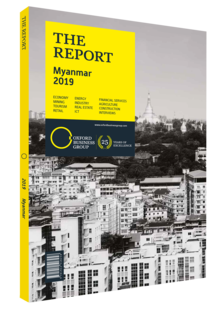Growth of Myanmar ICT improves financial inclusion and efficiency
Recent efforts to narrow Myanmar’s digital divide have bolstered regional economies and transformed the technological landscape. The adoption of the latest ICT capabilities has improved efficiency in a range of areas, from agriculture to tax collection. While considerable improvements have been made, the country’s nascent digital economy ecosystem has lacked a solid foundation. However, after the establishment of a digital development committee and the creation of a draft Digital Economy Development Master Plan, the sector’s infrastructure is poised for a new era of growth.
Under a newly-formed Digital Economy Development Committee (DEDC), the government has ambitious plans to accelerate the widespread adoption of digital technology. These plans aim to attract investment, increase employment, develop skills within the ICT industry and encourage competition. To facilitate Myanmar’s digital transformation, the DEDC has also prioritised the establishment of an e-government platform to expedite policymaking and public administration.
Rankings
While Myanmar’s ICT sector has developed relatively quickly since liberalisation, today the country lags behind its regional peers in a variety of digital rankings. In 2018 Myanmar ranked 171st out of 190 economies on the World Bank ease of doing business index; regional counterparts Vietnam, Malaysia and Singapore ranked 68th, 24th and second, respectively. According to the UN’s 2018 e-government index, Myanmar placed 157th out of 193 UN member states, Although an improvement from its 2016 ranking of 169, Myanmar remains behind Thailand, Indonesia and Singapore, who placed 77th, 116th and fourth, respectively.
Despite having room to improve on its ICT competitiveness rankings, a range of reforms since the telecommunications sector’s liberalisation has seen Myanmar make progress in a number of the sector’s key areas. This has led to local businesses and communities rapidly adopting new technology. As of the third quarter of 2018, Myanmar’s smartphone penetration was 80%, ahead of Thailand, Indonesia, Malaysia and Singapore. Myanmar’s SIM penetration rate of 105% – only slightly behind neighbouring Thailand’s 122% – has made considerable progress from its 10% SIM penetration rate in 2013. Myanmar also leads in ASEAN in 3G/4G rollouts, with 90% of its population living within range of mobile broadband as of the fourth quarter of 2018.
The adoption of mobile technology has also played a significant role in financial inclusion and the disruption of informal remittance services. Money transfer through informal channels fell by around 66% between the third quarter of 2016 and that of 2018. In November 2018, almost 40% of people who sent money used a mobile money service, up from 0.8% in mid-2016.
Next Steps
To achieve the inclusive development goals stated in the government’s 12-point economic policy issued in 2016, the country needs a well-designed digital framework and greater digital infrastructure investment. A point of optimism for the ICT sector is that the DEDC announced that it was drafting Myanmar’s first Digital Economy Development Master Plan in early 2018 to foster the growth of the country’s digital economy. At the time of writing, the DEDC was also in the process of developing a short-term and a medium-term working programme to complement the master plan. Meanwhile, the government’s Universal Services Fund (USF), which was implemented in mid-2018, is set to bring much-needed infrastructure to rural areas where construction and operating costs are disproportionately higher than major cities. Efforts to alleviate power shortages, such as the ambitious National Electrification Plan that aims for 100% of households to be connected to the national grid by 2030, will also boost network access and efficiency.
While the establishment of the DEDC, implementation of the USF and adoption of a well-designed digital framework all bode well for the adoption of new ICT technologies, continued conflict in the border areas will remain a challenge for enhancing rural digital inclusion.
You have reached the limit of premium articles you can view for free.
Choose from the options below to purchase print or digital editions of our Reports. You can also purchase a website subscription giving you unlimited access to all of our Reports online for 12 months.
If you have already purchased this Report or have a website subscription, please login to continue.

